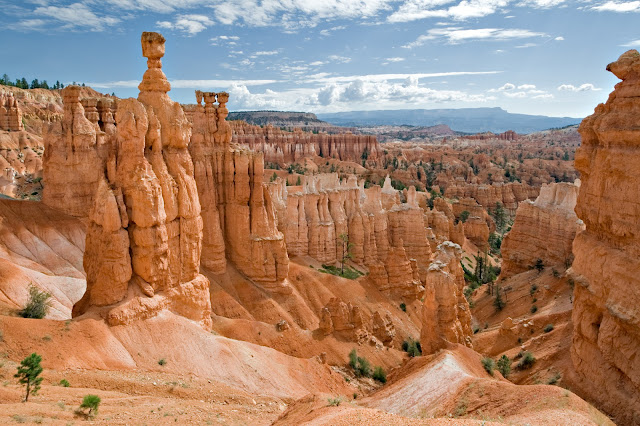Back to Erosion Landform
 |
| Hoodoo west of Moab, Utah |
- A hoodoo called as;
A tent rock
Fairy chimney
Earth pyramid
- They are tall ,thin spire of rock.
- That protrudes from the bottom of an arid drainage basin / badland.
- Range from 5-150 feet tall.
- Soft rock topped less easily eroded stone.
- That protects each column from the elements.
- They generally form sedimentary rock & volcanic rock.
 |
| Hoodoos east of Drumheller, Alberta, Canada |
- Hoodoos are found in the desert in dry, hot areas.
- Hoodoos have a variable thickness.
- Hoodoos range in size from that of an average human to heights exceeding a 10-story building.
- Shapes affected by erosional patterns of alternating hard & softer rock layers.
- Minerals deposited within different rock types.
- Hoodoos have different colors throughout their height.
 |
| Hoodoos in Bryce Canyon National Park, Utah |
- Commonly found in the High Plateaus region;
-Colorado Plateau
-Badlands Northern Great Plains
- Hoodoos are scattered these areas.
- Hoodoos are a tourist attraction in the Cappadocia region of Turkey.
- The stones formed as the sea-bed rose.
+in+Yehliu,+Taiwan.jpg) |
| The Queen's Head, in Yehliu, Taiwan |
- These hoodoos in particular formed between 70 and 75 million years ago.
- During the Cretaceous Period.
- These hoodoos are able to maintain as a unique mushroom.
 |
| Toadstool-shaped hoodoo at Grand Staircase-Escalante National Monument, Utah, USA |

i have been here bich
ReplyDelete